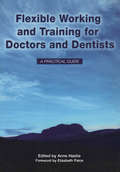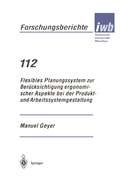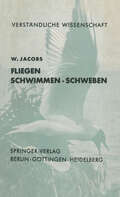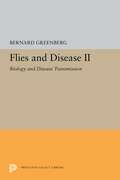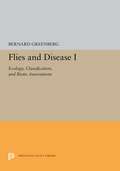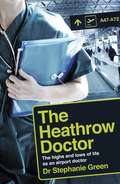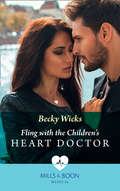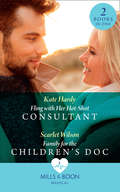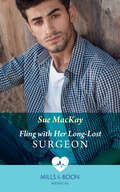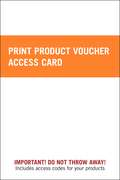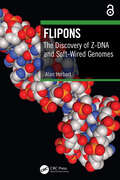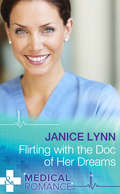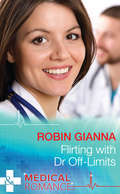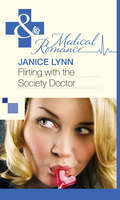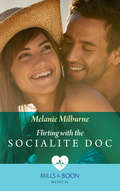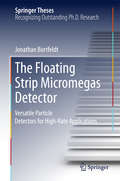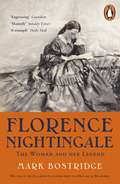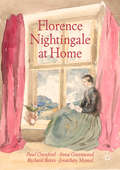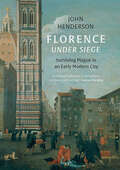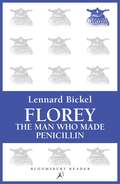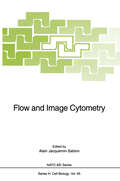- Table View
- List View
Flexible Working and Training for Doctors and Dentists: Pt. 1, 2007
by Anne Hastie Elisabeth Paice Elizabeth BoathThis work includes a foreword by Elisabeth Paice. "Flexible Training and Working for Doctors and Dentists" is a real-world, practical guide to the opportunities available for flexible training and working. It explains the current rules and regulations and promotes the 'Improving Working Lives' initiative for NHS workers - a Department of Health priority. It presents a wealth of information, including details on sabbaticals, management roles, maternity and sickness leave, academic life and the GP returner scheme. This straightforward guide will be invaluable to doctors and dentists working in primary and secondary care, medical and dental students and staff, and doctors and dentists in training. Healthcare policy makers and shapers will find it an excellent resource, along with healthcare managers and careers counsellors. "The first book on flexible training and working in medicine and dentistry. The subject matter is highly topical. The proportion of women in medicine and dentistry rises each year, and with it the demand for less than full-time working. This book will prove a useful resource for any doctors or dentists who are contemplating working less than full-time themselves, or who guide or manage others making these choices. Clinical tutors, course organisers and deanery staff will find it invaluable, and unique." - Elisabeth Paice, in her Foreword.
Flexible Working and Training for Doctors and Dentists: Pt. 1, 2007
by Anne Hastie Elisabeth Paice Elizabeth BoathThis work includes a foreword by Elisabeth Paice. "Flexible Training and Working for Doctors and Dentists" is a real-world, practical guide to the opportunities available for flexible training and working. It explains the current rules and regulations and promotes the 'Improving Working Lives' initiative for NHS workers - a Department of Health priority. It presents a wealth of information, including details on sabbaticals, management roles, maternity and sickness leave, academic life and the GP returner scheme. This straightforward guide will be invaluable to doctors and dentists working in primary and secondary care, medical and dental students and staff, and doctors and dentists in training. Healthcare policy makers and shapers will find it an excellent resource, along with healthcare managers and careers counsellors. "The first book on flexible training and working in medicine and dentistry. The subject matter is highly topical. The proportion of women in medicine and dentistry rises each year, and with it the demand for less than full-time working. This book will prove a useful resource for any doctors or dentists who are contemplating working less than full-time themselves, or who guide or manage others making these choices. Clinical tutors, course organisers and deanery staff will find it invaluable, and unique." - Elisabeth Paice, in her Foreword.
Flexibles Planungssystem zur Berücksichtigung ergonomischer Aspekte bei der Produkt- und Arbeitssystemgestaltung (iwb Forschungsberichte #112)
by Manuel GeyerFlies and Disease: II. Biology and Disease Transmission (Princeton Legacy Library #5363)
by Bernard GreenbergThis second volume of Flies and Disease spans the recorded history of synanthropic flies, from earliest Sumerian writings to contemporary research on their biology and involvement in the transmission of disease agents. Geographically, its coverage is worldwide. Biologically, it provides an in-depth view of the community in the fly and the fly in the community. The exhaustive evaluation of fly involvement in more than sixty human and animal diseases is drawn against a background that gives careful balance to other modes of dissemination.The opening chapter is a survey of attitudes toward flies through recorded history. The second chapter deals with the life history, breeding, distribution, dispersal, and overwintering habits of common synanthropic flies. Chapter 3 looks at the fly as a host and examines its micro-ecology from the viewpoint of the microbe intent on colonizing the fly. The final two chapters examine the evidence for the specific involvement of flies in human and animal diseases.The result is the most complete portrait ever drawn of these ancient pests and a rational basis for new programs of research. This book should prove invaluable to the public health worker, epidemiologist, medical entomologist, microbiologist, and parasitologist. Together with Volume I, it is a monumental work on the complex subject of flics and disease and will remain the definitive work for years to come.Bernard Greenberg is Professor of Biological Sciences at the University of Illinois, Chicago Circle.Originally published in 1973.The Princeton Legacy Library uses the latest print-on-demand technology to again make available previously out-of-print books from the distinguished backlist of Princeton University Press. These editions preserve the original texts of these important books while presenting them in durable paperback and hardcover editions. The goal of the Princeton Legacy Library is to vastly increase access to the rich scholarly heritage found in the thousands of books published by Princeton University Press since its founding in 1905.
Flies and Disease: I. Ecology, Classification, and Biotic Associations (Princeton Legacy Library #5372)
by Bernard GreenbergIn this first volume, Professor Greenberg offers to epidemiologists, medical entomologists, microbiologists, parasitologists, and others concerned with public health and synanthropic and interspecies relationships, a definitive reference work based upon a comprehensive review of the vast studies undertaken during the past 50 years.Originally published in 1971.The Princeton Legacy Library uses the latest print-on-demand technology to again make available previously out-of-print books from the distinguished backlist of Princeton University Press. These editions preserve the original texts of these important books while presenting them in durable paperback and hardcover editions. The goal of the Princeton Legacy Library is to vastly increase access to the rich scholarly heritage found in the thousands of books published by Princeton University Press since its founding in 1905.
Flight Risk: The Highs and Lows of Life as a Doctor at Heathrow Airport
by Dr Stephanie GreenAn exhilarating insight into the life of a doctor at Heathrow Airport, where the truth is often stranger than fiction.For over a decade, Stephanie Green was a doctor on-call for one of the world's busiest airports, confronting dramatic, bizarre and sometimes heart-breaking situations. During her 24-hour shifts at Heathrow, Dr Green had to be ready for anything: from finding an abandoned suitcase leaking blood onto the carousel, to discovering a man smuggling heroin in a corset.It's a job that brought her into contact with all walks of life; her patients included drug mules and fugitives, schizophrenics and stowaways, refugees and tourists. And with the threats of a nerve agent poisoning or a Level Four viral epidemic always in the back of her mind, Dr Green found herself on the frontline where the decisions are made about who - or what - was allowed to leave the airport's borders.FLIGHT RISK reveals the thrilling drama that takes place behind-the-scenes of an airport and what is needed to make critical decisions in this hidden no-man's land of geopolitics, terror, tragedy and medicine.
The Fling That Changed Everything: The Man She Could Never Forget / The Nurse Who Stole His Heart / Saving Maddie's Baby / A Sheikh To Capture Her Heart / The Fling That Changed Everything / A Child To Open Their Hearts (Wildfire Island Docs #5)
by Alison RobertsTempted—to take another chance on love…
Fling With The Children's Heart Doctor (Mills & Boon Medical): Stolen Nights With The Single Dad / Fling With The Children's Heart Doctor
by Becky WicksWill she find a new home… …In the surgeon’s arms?
Fling With Her Hot-Shot Consultant (Changing Shifts #1)
by Kate HardyTime’s running out… …on their Highland fling!
Fling With Her Hot-Shot Consultant / Family For The Children's Doc: Fling With Her Hot-shot Consultant (changing Shifts) / Family For The Children's Doc (changing Shifts) (Mills And Boon Medical Ser. #1)
by Kate Hardy Scarlet WilsonFrom house share to life-share? In this Changing Shifts story, paediatrician Georgie Jones knows how she’s going to deal with the pain her cheating late husband caused – move to Edinburgh! And share stolen kisses with gorgeous consultant Ryan McGregor…
Fling With Her Long-Lost Surgeon (Mills & Boon Medical): Fling With Her Long-lost Surgeon / Saving The Single Mum's Heart
by Sue MacKayIs the surgeon from her past… …the answer to her future?
Flip and See ECG - E-Book
by Elizabeth Gross CohnWhen it comes to learning ECG interpretation, there's simply no faster or easier way to master basic rhythms than this unique book. Using a fun and easy-to-understand writing style, this updated new edition uses humor, cartoons, and personal stories to walk you through the entire ECG process: from finding a heartbeat, to monitoring an electrocardiogram, to interpreting the heart rhythm. A unique Flip and See section allows you to view normal ECGs on one side of the page and abnormal ECGs on the other, along with concise text that clearly explains the differences between them. Plus, the completely redesigned Cohn's Pocket Guide for ECG Interpretation aids both students and practitioners in rhythm interpretation.Lay-flat spiral binding makes it easy to use anywhere, and the small size fits into a lab coat pocket. Unique Flip and See section at the end of the book allows you to see each rhythm side-by-side with a normal ECG rhythm, while a written walkthrough explains the important differences between the rhythms. Excuse Me! features highlight frequently asked student questions with easy-to-understand answers. Conversational language and clear illustrations and cartoons make the information easy to remember and fun to learn. New and updated information across the entire book includes coverage of new pacemaker strips and now includes 12-lead interpretation and 12-lead axis identification. New cartoons have been added to make key points memorable and entertaining. Updated algorithms reflect the new 2010 ECC Guidelines. Completely redesigned Cohn's Pocket Guide for ECG Interpretation, a plastic heart rate ruler, aids both students and practitioners in rhythm interpretation. Expanded appendix provides illustrations of ECG complexes as they relate to heart damage.
Flipons: The Discovery of Z-DNA and Soft-Wired Genomes
by Alan HerbertAlan Herbert has played a leading part in discovering the biological roles for a high-energy form of DNA twisted to the left rather than to the right. Both Z-DNA and the Z-RNA sensing proteins are critical for protecting hosts against both viruses and cancers. The proteins also play critical roles in the programmed cell death of aging cells. Other types of flipons exist and alter the readout of transcripts from the genome, encoding genetic information by their shape rather than by their sequence. Many of these flipons are within repeat elements that were previously considered to be just genomic junk. Instead these genetic elements increase the adaptability of cells by flipping DNA conformation. By acting as digital switches, the different flipon types can alter cellular responses without any change to their sequence or any damage to DNA. These highly dynamic structures enable the rapid evolution of multicellular organisms. The junk DNA in repeats also encode peptide patches that enable the assembly of cellular machines. The intransitive logic involved enhances the chance of an individual surviving a constantly changing environment.Key Features Causes us to rethink how information is encoded in the genome Changes our understanding of how our genome evolved and how we protect ourselves against viruses and cancers while sparing normal cells Shows that high energy forms of DNA, such as left-handed DNA do exist inside the cell Accessible to those in academia and the general public, and speaks to the next generation, encouraging them to find their own path in scientific discovery The Open Access version of this book, available at http://www.taylorfrancis.com, has been made available under a Creative Commons Attribution-Non-Commercial-No Derivative License (CC-BY-NC-ND) 4.0 license.
Flipons: The Discovery of Z-DNA and Soft-Wired Genomes
by Alan HerbertAlan Herbert has played a leading part in discovering the biological roles for a high-energy form of DNA twisted to the left rather than to the right. Both Z-DNA and the Z-RNA sensing proteins are critical for protecting hosts against both viruses and cancers. The proteins also play critical roles in the programmed cell death of aging cells. Other types of flipons exist and alter the readout of transcripts from the genome, encoding genetic information by their shape rather than by their sequence. Many of these flipons are within repeat elements that were previously considered to be just genomic junk. Instead these genetic elements increase the adaptability of cells by flipping DNA conformation. By acting as digital switches, the different flipon types can alter cellular responses without any change to their sequence or any damage to DNA. These highly dynamic structures enable the rapid evolution of multicellular organisms. The junk DNA in repeats also encode peptide patches that enable the assembly of cellular machines. The intransitive logic involved enhances the chance of an individual surviving a constantly changing environment.Key Features Causes us to rethink how information is encoded in the genome Changes our understanding of how our genome evolved and how we protect ourselves against viruses and cancers while sparing normal cells Shows that high energy forms of DNA, such as left-handed DNA do exist inside the cell Accessible to those in academia and the general public, and speaks to the next generation, encouraging them to find their own path in scientific discovery The Open Access version of this book, available at http://www.taylorfrancis.com, has been made available under a Creative Commons Attribution-Non-Commercial-No Derivative License (CC-BY-NC-ND) 4.0 license.
Flirting With The Doc Of Her Dreams (Mills And Boon Medical Ser.)
by Janice LynnDr Eli Randolph is Nurse Beth’s ultimate fantasy man – even though he doesn’t know she exists… But after an accidental risqué text message suddenly Eli knows exactly who Beth is! Soon Beth’s flirting like crazy with the doc of her dreams, and she’s about to discover that reality is better than imagination…
Flirting with Dr Off-Limits: Career Girl In The Country / A Doctor To Remember / Flirting With Dr Off-limits (Mills And Boon Medical Ser.)
by Robin GiannaFlirting with the forbidden… For intern Dr. Katy Pappas, seeing delectable surgeon Alec Armstrong again is sweet torture! He might have rejected her after their sinfully delicious kiss years before, but he still sets her pulse racing!
Flirting With The Society Doctor (Mills And Boon Medical Ser.)
by Janice LynnVale Wakefield is a spectacular doctor, but Faith Fogarty knows his ‘for ever' factor is nil – and he'll always go for designer-clad socialites rather than colleagues in unflattering scrubs! She's spent months fighting her attraction, but now, facing a weekend as Vale's date – to a society wedding!
Flirting with the Socialite Doc: Return Of Dr Irresistible / Dr Perfect On Her Doorstep / Flirting With The Socialite Doc (Mills And Boon Medical Ser.)
by Melanie MilburneGP Lady Isabella has fled to a remote Australian town to mend her broken heart. But keeping a low profile isn’t easy when she mistakes the local cop for a stripper! Zach is back in Jerringa Ridge to take care of his injured father. And, although Izzy might be an unwanted distraction, Zach soon finds himself flirting with trouble…!
The Floating Strip Micromegas Detector: Versatile Particle Detectors for High-Rate Applications (Springer Theses)
by Jonathan BortfeldtThis book discusses a novel and high-rate-capable micro pattern gaseous detector of the Micromegas (MICRO-MEsh GAS detector) type. It provides a detailed characterization of the performance of Micromegas detectors on the basis of measurements and simulations, along with an in-depth examination of analysis and reconstruction methods. The accurate and efficient detection of minimum ionizing particles in high-rate background environments is demonstrated. The excellent performance determined here for these lightweight detectors will make possible the live medical imaging of a patient during ion-beam treatment.
Florence Nightingale: The Woman and Her Legend
by Mark BostridgeWinner of the Elizabeth Longford Prize for Historical BiographyMark Bostridge's Florence Nightingale is a masterful and effortlessly enjoyable biography of one of Britain's most iconic heroines.Whether honoured and admired or criticized and ridiculed, Florence Nightingale has invariably been misrepresented and misunderstood. As the Lady with the Lamp, ministering to the wounded and dying of the Crimean War, she offers an enduring image of sentimental appeal and one that is permanently lodged in our national consciousness. But the awesome scale of her achievements over the course of her 90 years is infinitely more troubling - and inspiring - than this mythical simplification.From her tireless campaigning and staggering intellectual abilities to her tortured relationship with her sister and her distressing medical condition, this vivid and immensely readable biography draws on a wealth of unpublished material and previously unseen family papers, disententagling the myth from the reality and reinvigorating with new life one of the most iconic figures in modern British history.
Florence Nightingale at Home
by Paul Crawford Anna Greenwood Richard Bates Jonathan MemelWinner of the 2021/2022 People's Book Prize Best Achievement AwardHomes can be both comforting and troubling places. This timely book proposes a new understanding of Florence Nightingale’s experiences of domestic life and how ideas of home influenced her writings and pioneering work. From her childhood homes in Derbyshire and Hampshire, she visited the poor sick in their cottages. As a young woman, feeling imprisoned at home, she broke free to become a woman of action, bringing home comforts to the soldiers in the Crimean War and advising the British population on the home front how to create healthier, contagion-free homes. Later, she created Nightingale Homes for nursing trainees and acted as mother-in-chief to her extended family of nurses. These efforts, inspired by her Christian faith and training in human care from religious houses, led to major changes in professional nursing and public health, as Nightingale strove for homely, compassionate care in Britain and around the world. Shedid most of this work from her bed after contracting the debilitating illness, brucellosis, in the Crimea, turning her various private homes into offices and ‘households of faith’. In the year of the bicentenary of her birth, she remains as relevant as ever, achieving an astonishing cultural afterlife.
Florence Under Siege: Surviving Plague in an Early Modern City
by John HendersonA vivid recreation of how the governors and governed of early seventeenth-century Florence confronted, suffered, and survived a major epidemic of plague Plague remains the paradigm against which reactions to many epidemics are often judged. Here, John Henderson examines how a major city fought, suffered, and survived the impact of plague. Going beyond traditional oppositions between rich and poor, this book provides a nuanced and more compassionate interpretation of government policies in practice, by recreating the very human reactions and survival strategies of families and individuals. From the evocation of the overcrowded conditions in isolation hospitals to the splendor of religious processions, Henderson analyzes Florentine reactions within a wider European context to assess the effect of state policies on the city, street, and family. Writing in a vivid and approachable way, this book unearths the forgotten stories of doctors and administrators struggling to cope with the sick and dying, and of those who were left bereft and confused by the sudden loss of relatives.
Florey: The Man Who Made Penicillin
by Lennard BickelIt wouldn't be for years after that fateful day when Alexander Fleming sneezed on a petri dish and stumbled upon Penicillin, that the almost miraculous power of this mould would transform the lives of every person on the planet. In Florey, The Man Who Made Penicillin we follow the life of Howard Walter Florey, who worked tirelessly for years with his dedicated team at Oxford to realise the potential of not only penicillin, but also the huge breadth of 'tailor made' antibiotics. Born in Australia, Florey left Adelaide for Oxford on a Rhodes scholarship after graduating in medicine, seeking a career in medical science. In a time when an infection from a thorn scratch could lead to a long and painful death, and meningitis, rheumatic fever, venereal disease and other bacterial infections had meant certain doom, the idea of an antibiotic that could treat all of these afflictions was almost unimaginable. In the aftermath of WW1, when septicaemia and gas gangrene had claimed the lives of so many young men, the need for antibiotics had never been keener. First published in 1972, Florey, the Man Who Made Penicillin tracks Florey's battle with funding, the many set-backs and limitations of his equipment and public opinion, and the fascinating journey that led humankind to Penicillin. Whist Fleming got the lion's share of the credit, it was Florey who truly gave the world Penicillin.
Flow and Image Cytometry (Nato ASI Subseries H: #95)
by Alain Jaquemin-SablonImage analysis and flow cytometry are complementary techniques which provide new insights into essential aspects of cell biology. This book presents an up-to-date overview of current ideas and methods in these domains. It consists of three parts. Part I, "Membrane Dynamics and Function", deals with adhesion molecules, membrane pump dynamics, membrane fusion and endocytosis, membrane potential, T-cell homing and cytoskeleton, etc. The second part focuses on problems of cell proliferation, chromosome analysis and sorting, apoptosis, imaging cytometry of fixed and living cells, image analysis for gene mapping from flow-sorted chromosomes, chromatin organization, and liposome-mediated delivery of DNA binding drugs. The third part covers data management systems, cell sorting techniques and microscopy.
